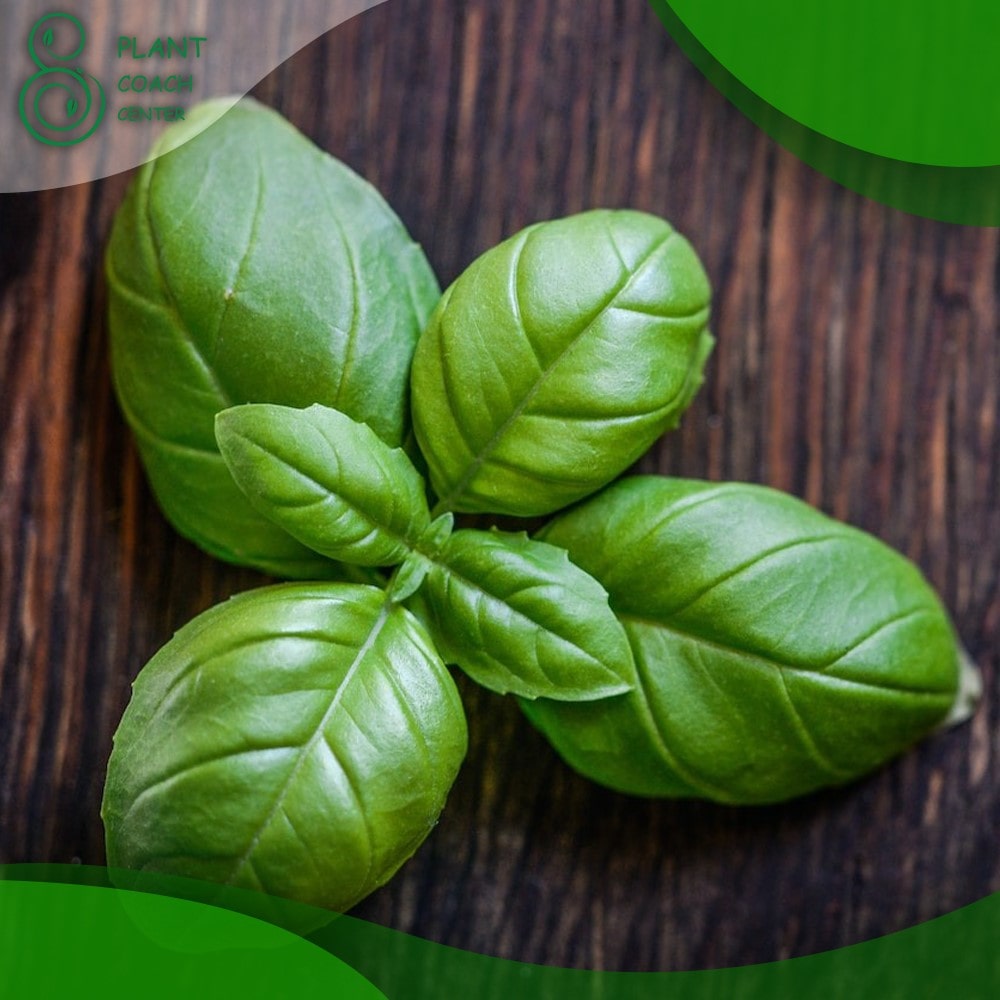When to Plant Basil Outside
Basil is a popular herb that is used in many culinary dishes and has several health benefits. Growing basil in your garden can be a rewarding experience, but it requires specific growing conditions and care. Understanding when to plant basil outside is crucial for a successful harvest.
In this article, we will discuss the best time to plant basil, techniques for planting, and how to care for basil plants. We will also cover common problems that basil plants may encounter and how plant coaching can help resolve these issues. For more information on plant coaching, visit plantcoachcenter.com.
Understanding Basil
Basil is a herb that is native to tropical regions of central Africa and southeast Asia. There are several types of basil, including sweet basil, Thai basil, and lemon basil. Basil is a good source of vitamins A, C, and K, and a rich source of antioxidants. It’s also high in essential oils, which give it a unique flavor and aroma.
Growing Requirements of Basil
Basil is a warm-season herb that requires well-draining soil and plenty of sunlight. It can tolerate some shade, but it grows best in full sunlight. Basil plants are sensitive to cold temperatures and can be damaged by frost. They also require regular watering and fertilization to grow properly.
When to Plant Basil Outside
The best time to plant basil outside is after the danger of frost has passed and the soil has warmed up to at least 50 degrees Fahrenheit. The ideal temperature range for basil growth is between 70 and 80 degrees Fahrenheit. Basil seeds take about 5-10 days to germinate, and the plants can take up to 2 months to reach maturity.
Techniques for Planting Basil
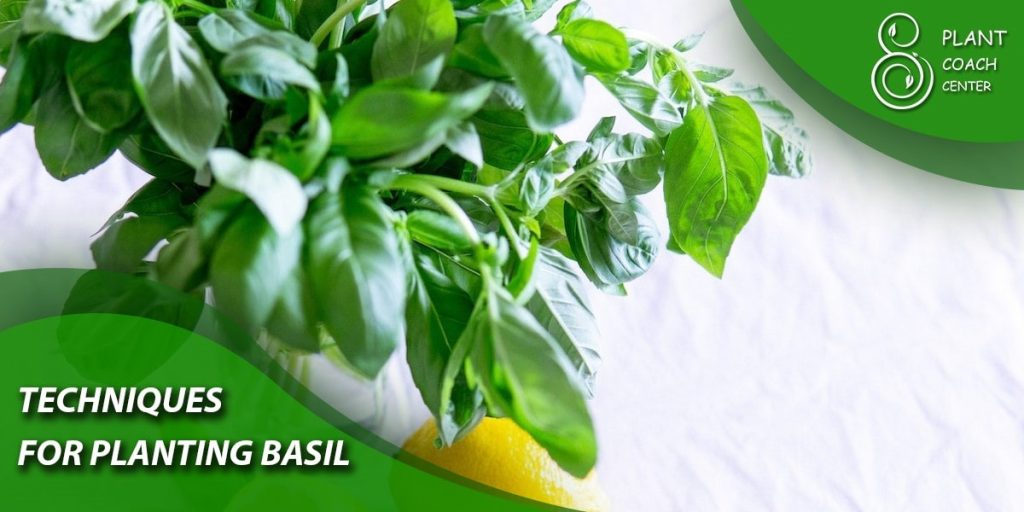
Basil plants prefer well-draining soil with a pH between 6.0 and 7.0. To prepare the soil for basil, follow these steps:
– Remove any weeds or debris from the planting area.
– Add compost or organic matter to improve soil quality.
– Mix in a slow-release fertilizer to provide nutrients.
Seed Selection and Preparation
Select high-quality basil seeds from a reputable supplier. Before planting the seeds, soak them in water for a few hours to help with germination.
Planting Basil Seeds
To plant basil seeds, follow these steps:
– Make a small hole in the soil and place the seed in the hole with the pointed end facing up.
– Cover the seed with soil and lightly pat down.
– Water the soil gently to avoid disturbing the seed.
Watering and Fertilizing Requirements for Basil
Basil plants require consistent moisture to grow properly. Water the plants deeply once a week, and make sure the soil stays consistently moist. Fertilize basil plants once a month with a balanced fertilizer to provide essential nutrients.
Caring for Basil Plants
Basil plants require regular pruning and shaping to promote healthy growth. Pinch the tips of the plants to encourage branching and bushier growth. Prune the plants in the dormant season to remove dead or damaged branches and shape the plant according to your preferred style.
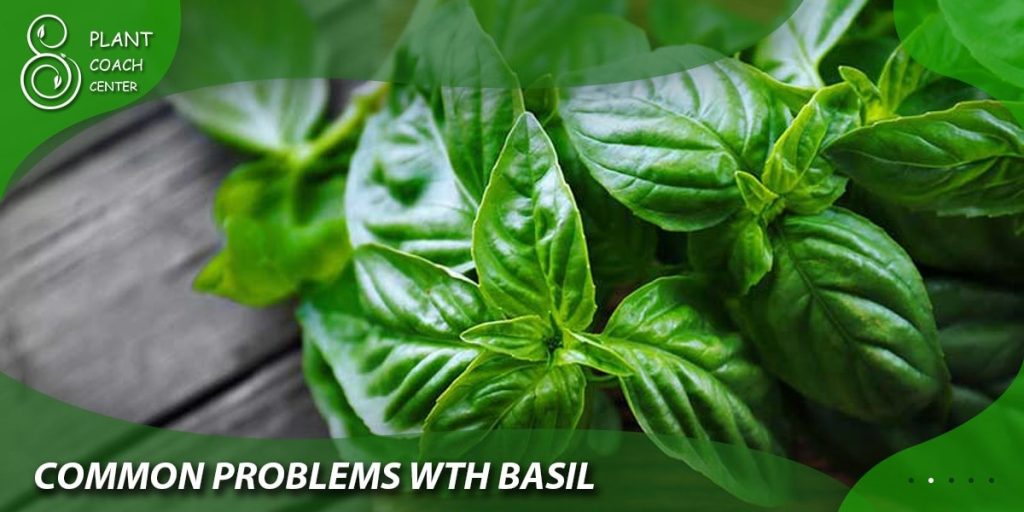
Common Problems with Basil
Basil plants are susceptible to several problems, including yellowing and wilting of leaves, pest and insect infestations, fungal diseases, and nutrient deficiencies.
Yellowing and Wilting of Leaves
Yellowing and wilting of leaves can be caused by overwatering or underwatering, nutrient deficiency, or pest infestation. To prevent this problem, make sure the soil stays consistently moist but not waterlogged, and use a balanced fertilizer to provide essential nutrients.
Pest and Insect Infestations
Basil plants can be attacked by pests and insects such as aphids, spider mites, and whiteflies. To control these pests, use natural insecticides or repellents.
Fungal Diseases
Fungal diseases like damping-off and powdery mildew can affect basil plants, especially during humid weather conditions. To prevent fungal diseases, make sure to provide good air circulation around your plants and avoid overwatering.
Nutrient Deficiencies
Basil plants can suffer from nutrient deficiencies such as nitrogen, magnesium, or potassium deficiency. To prevent this problem, use a balanced fertilizer once a month to provide essential nutrients.
Troubleshooting Basil Problems
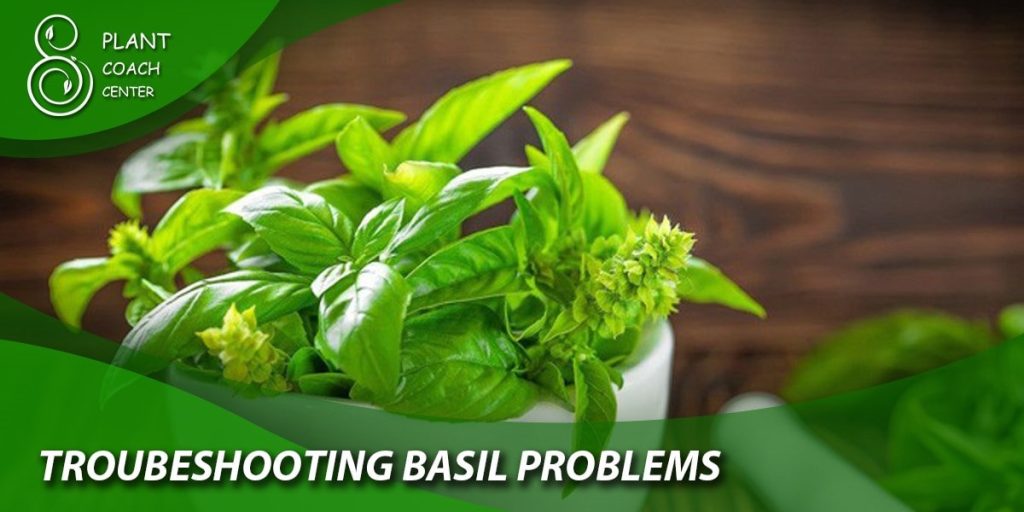
To identify the cause of basil problems, examine the leaves for signs of yellowing, wilting, or discoloration. Check for pests or insects on the plants and examine the soil for moisture levels and nutrient deficiencies.
Steps to Resolve Basil Problems
Depending on the cause of the problem, there are several steps you can take to resolve basil problems. For example, if the problem is overwatering, reduce the frequency of watering. If the problem is a nutrient deficiency, use a balanced fertilizer to provide essential nutrients. If the problem is pests or insects, use natural insecticides or repellents to control them.
Preventing Future Basil Problems
To prevent future basil problems, follow these tips:
– Plant basil in well-draining soil with the proper pH level.
– Provide consistent moisture and use a balanced fertilizer to provide essential nutrients.
– Prune and shape basil plants regularly to promote healthy growth.
– Monitor for pests and insects and use natural insecticides or repellents to control them.
– Provide good air circulation around your plants to prevent fungal diseases.
Plant Coaching for Basil Problems
Plant coaching is a service that can help you identify and resolve problems with your basil plants. Plant coaches can provide personalized advice on growing and caring for your plants, as well as troubleshooting common problems. They can also help you develop a plan for preventing future problems and achieving a successful harvest.
Importance of Plant Coaching for Basil Problems
Plant coaching can be a valuable resource for basil growers, especially those who are new to growing herbs. A plant coach can provide expert advice and guidance on plant care, which can help you avoid common mistakes and achieve better results. Plant coaching can also help you save time and money by preventing problems before they occur.
Types of Plant Coaching Services Available
There are several types of plant coaching services available, including online consultations, in-person consultations, and phone consultations. Some plant coaches also offer ongoing support and follow-up consultations.
Benefits of Plant Coaching for Basil Growers
The benefits of plant coaching for basil growers include:
– Expert advice and guidance on plant care and common problems.
– Personalized recommendations for your specific growing conditions.
– Time and cost savings by preventing problems before they occur.
– Increased confidence and knowledge in growing and caring for basil plants.
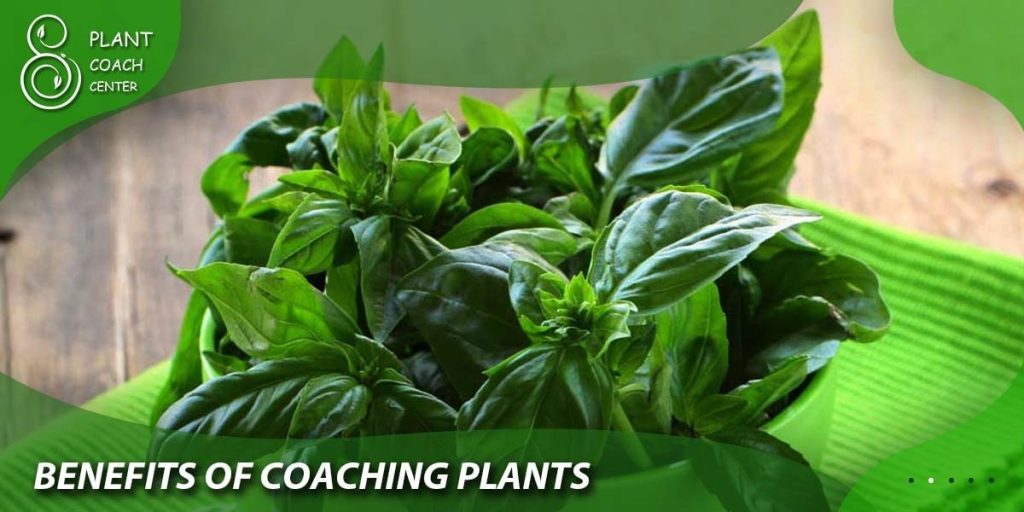
Conclusion
Growing basil can be a rewarding experience, but it requires specific growing conditions and care. Understanding when to plant basil outside is crucial for a successful harvest. Techniques for planting, caring, and troubleshooting common problems are important to ensure that your basil plants thrive.
Plant coaching can be a valuable resource for basil growers, providing expert advice and guidance on plant care and troubleshooting problems. For more information on plant coaching, visit plantcoachcenter.com.
When should I plant basil outside?
Spring.
Can I plant basil outside in winter?
No.
What is the best time to plant basil outdoors?
After the last frost.
When does basil grow best outdoors?
During warm summer months.


